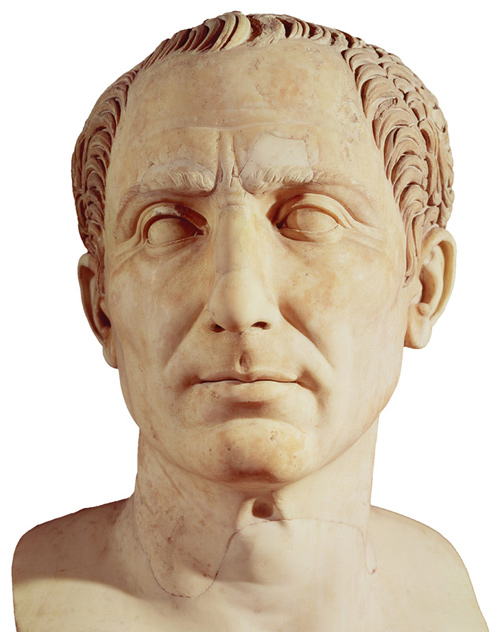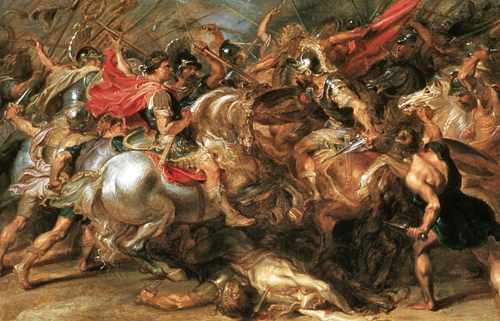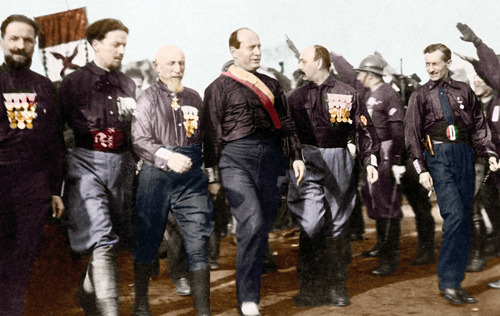Moments in History
Romulus and Remus The
foundation of Rome is said to have occurred in 753 BC. Twins Romulus
and Remus, sons of Mars and a Vestal Virgin, were set adrift by their
evil uncle and suckled by a she-wolf. They then founded rival Bronze Age
villages on the Palatine, but Romulus killed Remus during an argument,
and his “Rome” went on to greatness. Rape of the Sabine Women To
boost the female population in the 750s BC Romulus’s men kidnapped
women from the neighbouring Sabine kingdom. As Rome began to expand,
however, the kingdoms were united. Rome was later conquered by the
Etruscan Tarquin dynasty. In 510 BC, a patrician-ruled Republic was
formed that lasted more than 450 years. Assassination of Caesar A
series of military victories, adding Gaul (France) to Rome, increased
General Julius Caesar’s popularity. He marched his army to Rome and
declared himself Dictator for Life, but on 15 March 44 BC he was
assassinated. Caesar’s adopted son Octavian changed his name to Augustus
and declared himself emperor in 27 BC.

Bust, Julius Caesar
Rome Burns In
AD 64 fire destroyed much of Rome. Emperor Nero rebuilt many public
works, but also appropriated vast tracts of land to build his Golden
House. Hounded from office, he committed suicide in AD 68 .

Rome burns
Battle at Milvian Bridge In
312 Emperor Constantine, whose mother was a Christian, had a vision of
victory under the sign of the Cross and defeated co-emperor Maxentius at
Milvian Bridge. He declared Christianity the state religion.

Fall of the Empire By
the late 4th century Rome was in decline, as Barbarians from across the
Rhine and Danube conquered outlying provinces. In 476, the last emperor
was deposed and the Empire fell. Papacy moves to Avignon Following
the departure of the papacy to France in 1309, the city became a
backwater ruled by petty princes who built palaces out of marble from
the great temples. In 1377 the papacy returned to Rome, and the city was
reborn.

Papal Palace, Avignon
Sack of Rome Rome
was conquered for the first time in more than a millennium in 1527.
Emperor Charles V’s Germanic troops held the city for seven months until
Pope Clement VII surrendered and promised to address concerns of the
new Protestant movement. Unification of Italy Piemontese
King Vittorio Emanuele II and his general, Garibaldi, spent years
conquering the peninsula’s kingdoms and principalities to create a new
country called Italy. In 1870, Garibaldi breached the Aurelian walls and
took the ancient capital, completing Italian Unification. Mussolini Takes Power Benito
“Il Duce” Mussolini, leader of the nationalistic Fascist Party, marched
on Rome in 1922 and was declared prime minister. Delusions of imperial
grandeur led him to excavate many of the ruins we see today. He allied
Italy with Hitler, but when the tides turned, Mussolini was deposed and
Italy joined Allied troops. The current Republic was set up in 1946.

Mussolini and Fascists march on Rome, 1922
Top 10 Influential Popes
St Peter The
Apostle (AD 42–67) tapped by Jesus to lead the church. After his
martyrdom in Rome the city became the epicentre of Christianity. St Leo the Great Rome’s bishop (440–61) made himself pontifex maximus of the Christian church. St Gregory the Great Affirmed the papacy as the western secular leader and converted England to Christianity (590–604). Innocent III This medieval pope (1198– 1216) hand-picked emperors and approved monkish orders. Boniface VIII Imperious, pragmatic and power-hungry, Boniface (1294–1303) instituted the first Jubilee to make money. Alexander VI Ruthless Borgia pope (1492–1503) used the pontificate to destroy rival families. Julius II Warrior
pope and patron of the arts (1513–21), he hired Michelangelo for the
Sistine Chapel and Raphael to decorate his apartment . Paul III Scholarly and secular, but fighting Protestant reforms, Paul III (1534–49) founded the Jesuits and the Inquisition. Sixtus V Cleansed Papal States of corruption (1585–90) and masterminded a Baroque overhaul of Rome. John Paul II The first non-Italian Pope for over 400 years, John Paul II (1920-2005), was famed for his extensive travelling.
|